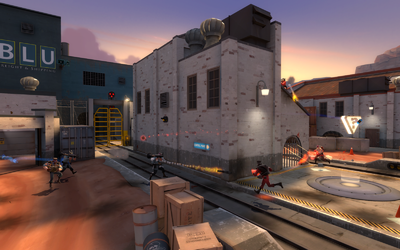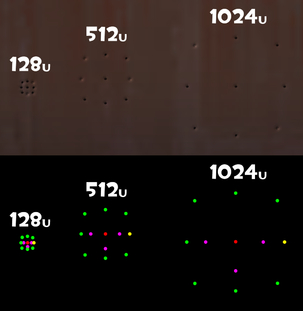Standard community competitive format
| “Gotta move that gear up!” This article may contain content that is out of date. You can help improve this article by updating the content as necessary. See the wiki style guide. Notes: None added |

The community competitive scene changes frequently. Some or all info may be outdated.
The standard competitive format is a set of customs and rules accepted by most Team Fortress 2 leagues. No league is required to follow these rules, but most major ones do, and most competitive players practice with them on. Settings not listed here are either left as default, do not impact gameplay, or significantly vary by league.
Most who play in leagues that follow the standard competitive format use the standard lineup as well.
Contents
Team sizes
Teams are limited to six players each. Most leagues allow teams to start with less players if they are unable to field a sixth (though it is common practice to give opponents some extra time to find all of their players if they are having trouble). Teams unable to field more than four players generally incur a forfeit loss.
Class limits
Classes are limited as follows:
- 2 Scout players or fewer at any given time
- 2 Soldier players or fewer at any given time
- 1 or 2 Pyro player(s) or fewer at any given time (varies by league)
- 1 Demoman player
- 1 or 2 Heavy player(s) or fewer at any given time (varies by league)
- 1 or 2 Engineer player(s) or fewer at any given time (varies by league)
- 1 Medic player or fewer at any given time
- 1 or 2 Sniper player(s) or fewer at any given time (varies by league)
- 2 Spy player(s) or fewer at any given time
Criticals
Random crits are disabled.
All non-random crits still function - for example, headshots from a Sniper Rifle will still deal critical damage. Backstabs do not critical hit, but still deal 200% of the targets current health.
Damage spread
Damage spread is disabled.
This means that damage randomization is removed, but damage ramp-up and falloff based on distance still occurs.
Weapon spread
Fixed weapon spread is enabled.
This means that pellet-style weapons (Shotgun, Scattergun, Force A Nature, Shortstop) fire pellets in a defined pattern. The pattern is composed of 9 hitscan paths spaced like a 3x3 grid, with one extra pellet going down the center (or, for the Force-A-Nature, two extra going down the center and one extra going down the middle-right path).
Stopwatch
Attack/Defend and Payload maps use stopwatch scoring.
This means that if both teams capture the same number of points when on offense, the team that did so faster wins that round. There are cases, for example, if a team caps three points on a Payload map, but they didn't complete the full map, then the other team is able to use the default game time to cap one point high than the other team. They may also still win if they are able to get the three points faster than the other team.
Grave talk
Grave talk (team talk) is enabled, but a large majority of players use an external program (such as Mumble or Discord) for voice communication.
This means that team members can use in-game voice and text chat with each other even while dead. Unfair ghosting is prevented by only allowing dead players to spectate allies, with third-person and free-roam spectating disabled.
Customization
All game models, textures, and particles are forced to default via sv_pure 2.
The wait command may or may not be disabled. Some scripts may be allowed depending on the league.
Custom HUDs are allowed in full.
| |||||||||||||||||||||||||||||||
